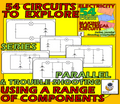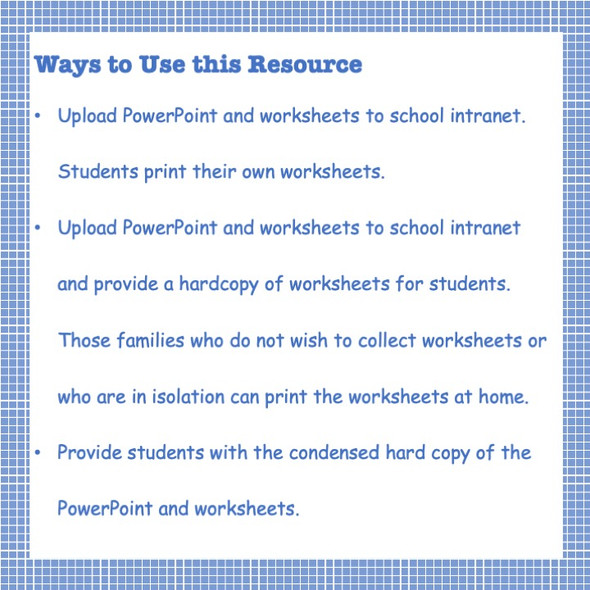Description
This product has been designed and used by our students to support learning in the study unit of electricity. Using circuit diagrams to create their own circuits and enhance their knowledge of how electricity works and reasons why electrical circuits can fail.
Key objectives taught:
- Follow circuit diagrams to make a range of circuits
- Identify what happens when circuits are constructed and why.
- Be able to explain why a circuit does not work using scientific vocabulary based on observations of both the circuit diagram and the made circuit.
- Predict from given circuit diagrams whether a circuit will work or not and offer reasons why
- Making a range of electrical circuits using an array of electrical components (including switches, bulbs, cells/batteries, buzzers, bells, motors and resistors)
- Students to trouble shoot errors and explain what has gone wrong.
- Series and parallel circuits, the strengths and weaknesses of both.
- Observing how power is used when multiple components are used in both a series and parallel circuits.
This product contains 54 circuit diagram design cards which grow in complexity. The include a wide range of circuits for students to build, some with obvious areas which would cause a circuit to not work and others which are more complex to identify.
Starting with simple series circuits and one component with a power source, other elements are soon added including switches and more batteries.
As the circuits grow in complexity, so too do the components being used and the order they are placed.
Following on from series circuits, a range of parallel circuits are then introduced which allows the students to observe the difference between the two circuits. A growing awareness of when each circuit could and should be used is developed as students see the benefits and drawbacks of each.
This product does not necessarily need components to use. We used them circuit diagrams to predict whether each of the circuits would work, what would happen in each, and identify the components used in each, and finally, describe how we would make each. Following this, as a class, we had the components and students worked in pairs to create each of the circuits on the diagrams. Once completed, the circuit diagrams were passed from one pair to another - with each pair making many of the different circuits within the sessions.
The benefit of this product meant that we could set up a Science Exploration area within the classroom for students to go and use the circuit components and create their own circuits by following the diagrams on the cards. Many then went on to explore and create their own, recording their own diagrams on small student whiteboards which we then copied and added to those in the collection. Therefore students started making each others diagrams.
We hope that this product works as well in your class as it did in ours and that your students enjoy and engage with it as much as ours did, for many weeks following our science theme of Electricity too!
Best wishes
INSPIReducation























